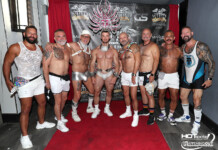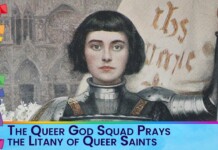We’re often asked by people of certain age cohorts and demographics when did “Queer” become an acceptable word. Of course, it happened organically and over time, but it has been used in a positive context for over half a century in academic, political, and even progressive theological circles, but has even been mainstream for over half of that time.
In social science, queer theory emerged in the early 90s out of the queer studies and women’s studies disciplines as a post-structuralist critical theory. Queer theory “queers” (or spoils or reads against or challenges) gender binaries and heteronormativity.
Politically, as far back as the 80s the word was being embraced or reclaimed by people to make it a word that instills pride rather than shame, a word that was ours to use happily rather than allow it to be a weapon used against us to victimize us, and to include all segments of the community…gay, lesbian, bisexual, straight allies, transgender, gender non-conforming, intersex, questioning, etc. Lots of ways to be queer, but an (ideally) unified, Queer community.
In theology, Queer Theology uses religion and sacred texts to affirm and empower same-gender loving people and people all along the continuum of gender, and to challenge and deconstruct the ways religion has been misused to promote homophobia and intolerance.
So, as an academic, political, and theological term, Queer has been in use for multiple decades. People at this table range in age from 57 to 70, and we’ve all embraced the term for many years, I for almost all of my adult life.














